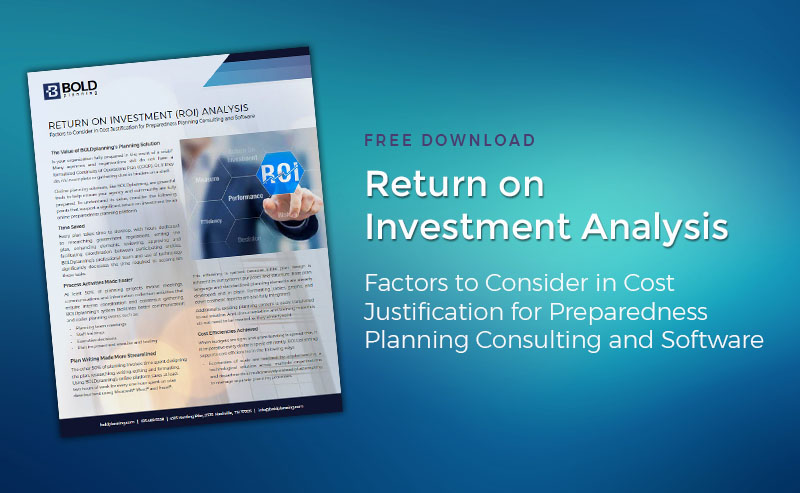Chances are you’ve considered contracting with an emergency/continuity planning consultant, or using some type of planning software to develop or improve your preparedness plans.
The question is, “Is it really going to be worth it?” After all, consultants are an extra hit to the budget. So is software, especially if it comes with all the bells and whistles and can actually live up to the user’s expectations.
So, how do you justify the expense and ultimately measure your return on investment (ROI)?
You start by considering the following aspects and what they could potentially mean to your organization:
- Time Savings – Plans can be developed in far less time, saving money, freeing resources and expediting preparedness.
- Easier Processes – Better communication and information sharing helps uncomplicate the planning process and improve executive decision making.
- Streamlined Plan Writing – Software may include standardized planning elements, including graphics and tables, to make plan writing easier and faster.
- Cost Efficiencies – Software and consulting services can simultaneously support planning efforts across multiple departments, agencies or jurisdictions, so there’s more bang for the buck.
- Plan Maintenance – Writing a COOP is only half the battle; keeping it up to date is the other. The use of planning software takes the stress out of the process.
- Integration and Added Value – Leading edge planning software supports cross-planning of your organization’s COOP or Continuity of Government (COG) plan with its Emergency Operations Plan (EOP), for a comprehensive emergency preparedness solution.
One or any combination of these aspects, i.e., benefits, could be just what makes emergency preparedness worth its weight in gold (literally) for your organization.
Want to learn more? Download BOLDplanning’s latest Fact Sheet, Return on Investment: Factors to Consider in Cost Justification for Preparedness Planning Consulting and Software.






